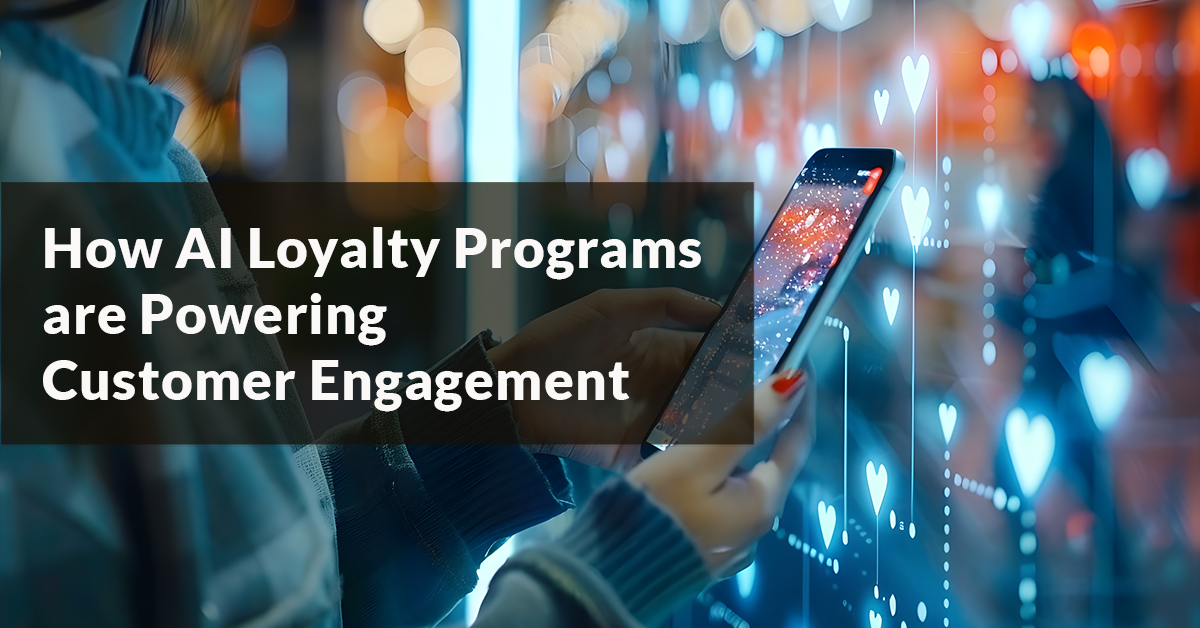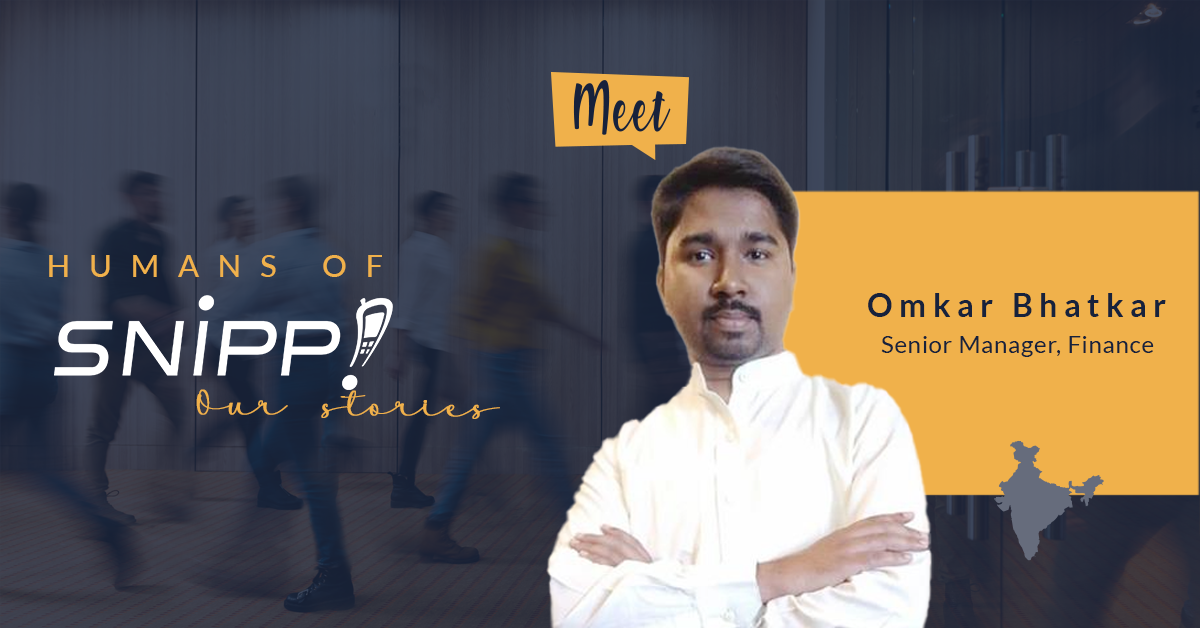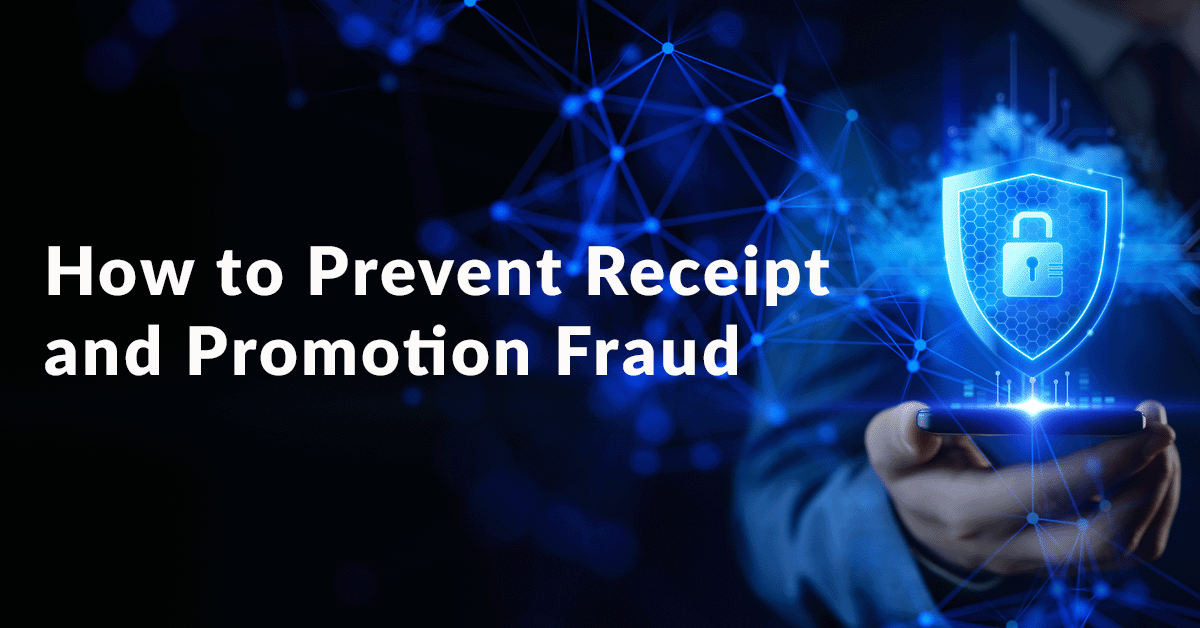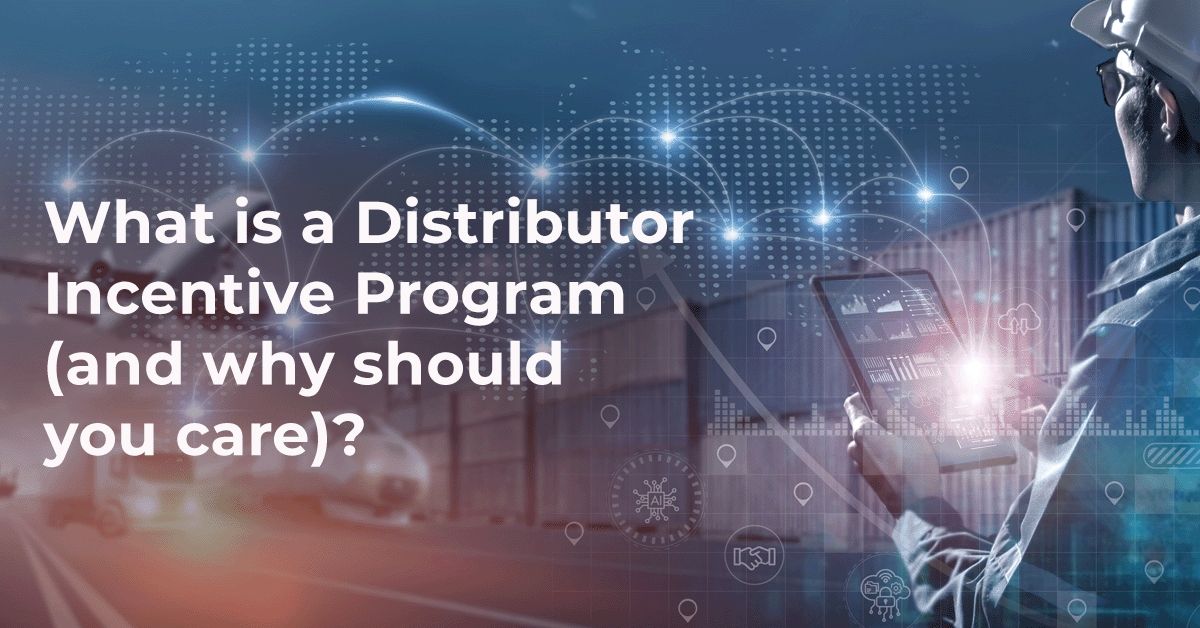AI isn’t just reshaping the future of loyalty, it’s delivering measurable results today. Across grocery, retail, and QSR sectors, leading brands are transforming static rewards programs into dynamic “ecosystems” that drive acquisition, retention, and long-term engagement.
From Punch Card to Personal Concierge
Think of the traditional coffee-shop punch card “buy 9, get 1 free” offer. There was motivation to follow through to that tenth freebie, but the rules were the same for every customer, which meant there was nothing that made you special.
Now picture that card coming to life. It recognizes your iced-latte shift in the summer, notes that you’ve been experimenting with oat milk, and nudges baristas accordingly. You get a just-in-time coupon delivered to your app as you walk past an outlet, and the barista welcomes you by name. That’s the simplest way to understand AI loyalty programs: more nuanced, more personal, more ‘oh wow, you really see me’.
Because of AI, the program adapts in real time based on your behavior, the weather, and evolving personal preferences. Instead of one-size-fits-all, it feels intuitive. Like the best concierge.
Why Brands are Betting Big on AI in Loyalty Programs
- The differentiation imperative. Loyalty programs are already table stakes. 90% of US online adults and 88% of shoppers in Europe’s five largest markets belong to at least one program. According to Forrester's Consumer Benchmark Survey, 2024, more than half say programs influence what they buy, and nearly two-thirds say they influence where they shop.
- The ROI is compelling. A 2025 Capgemini survey finds that embedding AI in core operations drives cost reductions ranging from 26% to 31%. Brands can reinvest these savings in loyalty experiences and richer rewards.
- Consumer expectations are rising. While discounts still matter, 71% of consumers expect personalized interactions -- a sense that brands really understand them -- and most feel frustrated when personalization misses the mark.
7 Ways AI Transforms Customer Loyalty
1. Enhanced Acquisition and Retention:
AI segments customers automatically and tailors welcome perks, making onboarding and redemption smooth while keeping members engaged at scale.![]()
Albertsons for U. Albertsons simplified its loyalty structure with AI in 2024, making it easier for customers to earn and redeem points. As a result, membership grew 15% to 44.3 million by early 2025.![]()
Domino’s Rewards. The pizza chain’s AI-guided revamp saw similar results, showing a 6% increase in U.S. sales, with management pointing to the rewards program as a driver of that growth.
2. Hyper-Personalized Offers That Drive Bigger Baskets:
AI engines analyze browsing behavior, past purchases, and real-time context to suggest perfect add-ons. Think of them as savvy stylists who already know what's in your wardrobe. The impact is significant. Deloitte Digital's 2024 research shows consumers spend 37% more with brands that personalize experiences, turning relevance directly into revenue.![]()
Sephora Beauty Insider. The retailer’s AI recommends shades and regimes so accurately that it lifts average basket size by roughly 25%. Rather than offering a generic “10% off,” the system places the perfect lipstick shade or skin-care kit in front of each shopper.
Carrefour & Monoprix. French retail chains and grocers like Carrefour and Monoprix leverage their loyalty apps to provide individualized, location-specific discounts and offers based on customers' purchasing behavior.
3. Engagement Loops That Catch Customers Before They Drift:
AI and predictive analytics spot potential loyalty lapses, triggering “micro-offers” that feel serendipitous -- like a digital tap on the shoulder -- letting brands intervene before it's too late.

Starbucks Deep Brew. The brand’s AI-powered engine blends huge amounts of app-based transaction data, personal preferences, weather, geolocation intel, and store inventory data to trigger timely, just-for-you offers, like “half-off cold brew, because it’s 95°F!” Those micro-nudges added four million extra visits in early 2024 and pushed active-member counts up 13%.
4. Smart Tier Management That Motivates Progress:
Static status levels often feel unattainable, making members feel like they’re stuck on a "bronze" rung forever. AI identifies the right reward at the right time, motivating behavior without over-discounting.![]()
CAVA Rewards. Post-relaunch in October 2024, its loyalty program lowered entry hurdles for mid-frequency guests pushed loyalty sales up 340 basis points of revenue with 10.8% year-over-year growth, and sign-ups now run 50 k+ per week (March 2025).
Papa Johns Papa Rewards. By lowering the redemption threshold of Papa Rewards, the brand helped draw about 1 million more loyalty members into its loyalty program in a single quarter, and accelerated repeat orders -- even as average ticket size fell slightly.
5. Gamification That Stays Fresh:
By turning shopping into quests or “missions,” brands can tap the dopamine hit of achievement that fitness apps do with steps or rings. The result: loyalty becomes a natural outcome, driving higher customer lifetime value.
Carrefour “Challenges.” The French supermarket chain's tiered MyClub loyalty program uses AI to create custom thresholds and goals for its members based on various factors, including shoppers' purchase history.![]()
ASDA Rewards. UK supermarket chain ASDA took gamification in a unique direction. Its "Pounds, Not Points" initiative had members build "pots" of cash through in-app quests instead of earning traditional points. The scheme catapulted ASDA to Britain’s No. 3 supermarket loyalty spot in under two years.
6. Fraud Control, Built-In:
As loyalty programs scale, so do the risks of fraud. From duplicate accounts and tampered receipts to fabricated images and suspicious redemptions, AI-powered loyalty platforms today have to do more than just drive engagement – they must actively protect program health and integrity. Think of it as an immune system detecting foreign cells before damage occurs.
Snipp CORRAL. Built on over 15 years of expertise, Snipp’s leading fraud prevention platform CORRAL uses AI, machine learning, and real-time monitoring to flag suspicious activity like fake receipts, mass uploads, or unusual participation spikes. These automated checks are reinforced with manual reviews, helping brands detect and prevent fraud across channels before rewards are issued.
7. Always-On Monitoring That Keeps Loyalty Platforms Efficient:
AI doesn’t just personalize rewards: it also keeps loyalty programs running smoothly behind the scenes. As programs grow more complex, AI-based monitoring systems analyze live API data to spot performance dips, flag technical bottlenecks, and trigger alerts in real time. This keeps loyalty programs more stable, reliable, and scalable — allowing teams to respond proactively to issues before they affect users, and ensuring seamless experiences for both brands and their members.

Schiff Rewards by Reckitt. Reckitt partnered with Snipp to launch Schiff Rewards, a cross-brand loyalty program where customers earn points across all channels and redeem them for rewards, coupons, and engagement-based tiers. Snipp integrated the program with Reckitt’s CDP, Salesforce, and Shopify, with AI-powered monitoring ensuring stability and real-time segmentation delivering highly targeted offers.
Beyond the Basics: Emerging AI-Driven Playbooks
- Layered Partner Ecosystems: AI-designed loyalty programs can extend emotional value beyond discounts. High-tier members can receive experiences money can’t easily buy, like exclusive events, tutorials, or wellness tools, thereby deepening their brand connection. This matters, because nearly 75% of what drives customer engagement and loyalty are emotional perks, especially among younger consumers. AI helps brands know what to offer, when, and to whom.
- Sephora’s Beauty Insider: Sephora used its partner network to offer top-tier Beauty Insider members unique experiences like a "Brow House Call" or a winery tour with Francis Ford Coppola, transforming loyalty into emotional engagement.
- CVS Health: The pharmacy brand’s upgraded app, powered by AI, delivers personalized health reminders, local service suggestions, and exclusive content from partners -- like guided meditations from Headspace and educational articles from Everyday Health -- driving millions toward an all-in-one wellness hub. It boasted a 22% rise in active users year-over-year with downloads increasing by 23%.
- Dynamic Loyalty Scores: Imagine a Fitbit-style pulse of brand love that synthesizes weighted data across a customer's many micro-journeys, capturing real-time engagement and sentiment. When a member’s “loyalty heartbeat” weakens, the engine automatically deploys a thank-you note, double-points voucher, or exclusive reward.
- Self-Adjusting Rewards. Domino’s continuously runs A/B and hold-out tests in its revamped Domino’s Rewards program, fine-tuning earn and burn thresholds in near real time according to its loyalty leadership team. Wendy’s, powered by the Punchh platform, uses the same split-testing and dynamic spend-threshold controls to identify which offers resonate fastest in the app.
Overcoming Implementation Challenges
- Balancing Personalization with Privacy: While 71% of consumers expect personalized experiences, many feel "watched" when personalization becomes overly specific, heightening privacy concerns. Leading programs mitigate this by pairing consent screens with clear value messaging (e.g. "We use your data to tailor better perks") and by strictly adhering to GDPR and CCPA
- Integration Complexity: Legacy systems often don’t talk to each other. According to CapGemini’s 2025 survey, 79% of executives cite outdated infrastructure as a major barrier to effective use of AI, and 73% point to fragmented IT systems. Starbucks’ Deep Brew platform was able to unify data from its mobile app, digital drive-thru, website and social media into a sophisticated analytics platform. But this required navigating complex infrastructure, cross-functional alignment, and robust data governance.
For brands without Starbucks-level resources, platforms like Snipp offer a more accessible path. Its API-first architecture connects existing POS, CRM, and e-commerce systems without full reengineering -- making it easier to adopt AI within legacy environments.
- Proving ROI: Loyalty teams are under growing pressure to prove financial value . The most effective programs use AI dashboards to track measurable, real-time metrics like repeat purchase rates, point burn, and incremental revenue -- making performance visible to finance teams and justifying continued investment.
- Maintaining the Human Element Despite its speed and efficiency, tech should amplify – not replace – human warmth. The best loyalty programs still include thoughtful gestures like handwritten notes or flowers sent when a customer loses a pet. AI just ensures those gestures land at the perfect moment.
Conclusion
Loyalty isn’t a one-time transaction, it’s an ongoing conversation. When a customer ignores or rejects an offer, the journey shouldn’t end – it should adapt. Today’s AI loyalty programs analyze real-time behavior and calculate loyalty scores to deliver smarter, better-timed alternatives.
The pattern is clear: AI creates a virtuous loop. Smarter personalization drives engagement. More engagement yields richer data. Better data powers even smarter personalization.
Brands like Starbucks, Domino’s, Albertsons, and Carrefour are already harnessing this loop. Their loyalty programs aren’t just reactive -- they’re predictive, proactive, and deeply personalized.
What makes this shift powerful isn’t just the tech; it’s the empathy it can scale. The best AI loyalty programs create responsive universes in which customers feel seen, understood, and valued. They’re grounded in simplicity, relevance, and real value -- then elevated through personalization.
With deep expertise in customer loyalty and AI, Snipp Interactive empowers brands to:
- Deliver hyper-personalized rewards and experiences.
- Protect program integrity through AI-driven fraud prevention.
- Continuously optimize incentives and engagement strategies.
- Enhance operational efficiency and reduce costs.
The future of loyalty is intelligent, personalized, and predictive. Let’s connect to explore how AI can take your loyalty program to the next level.






